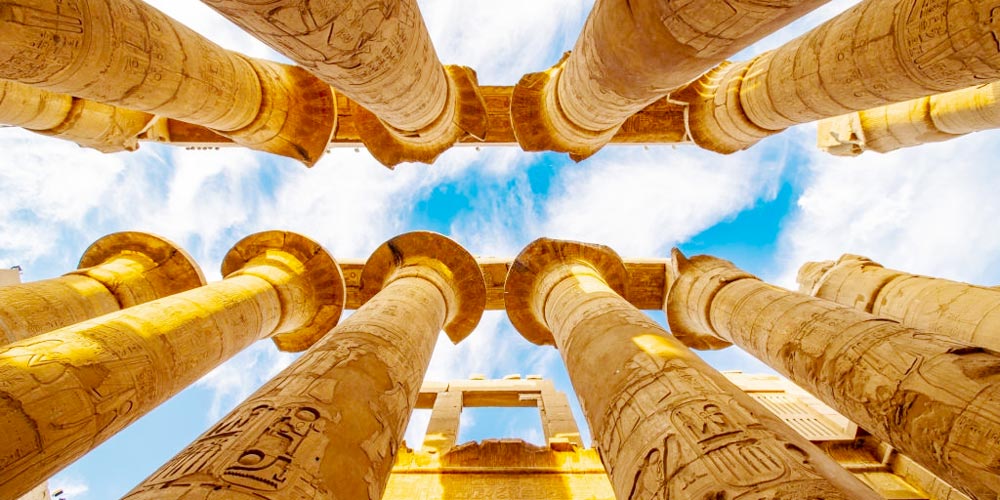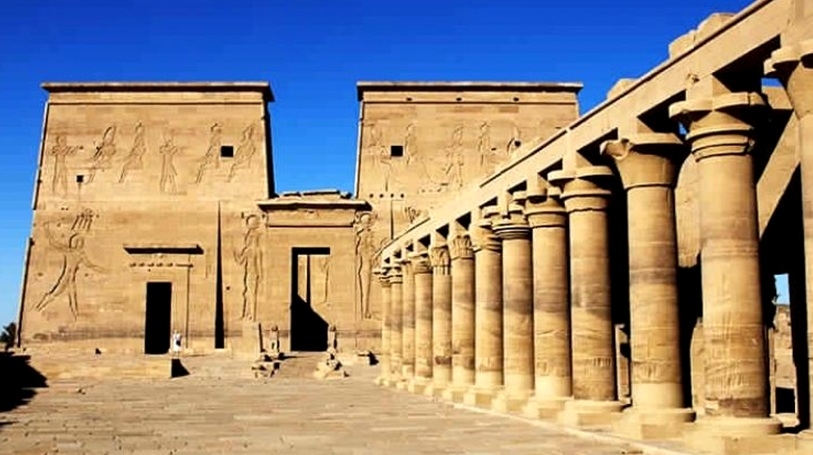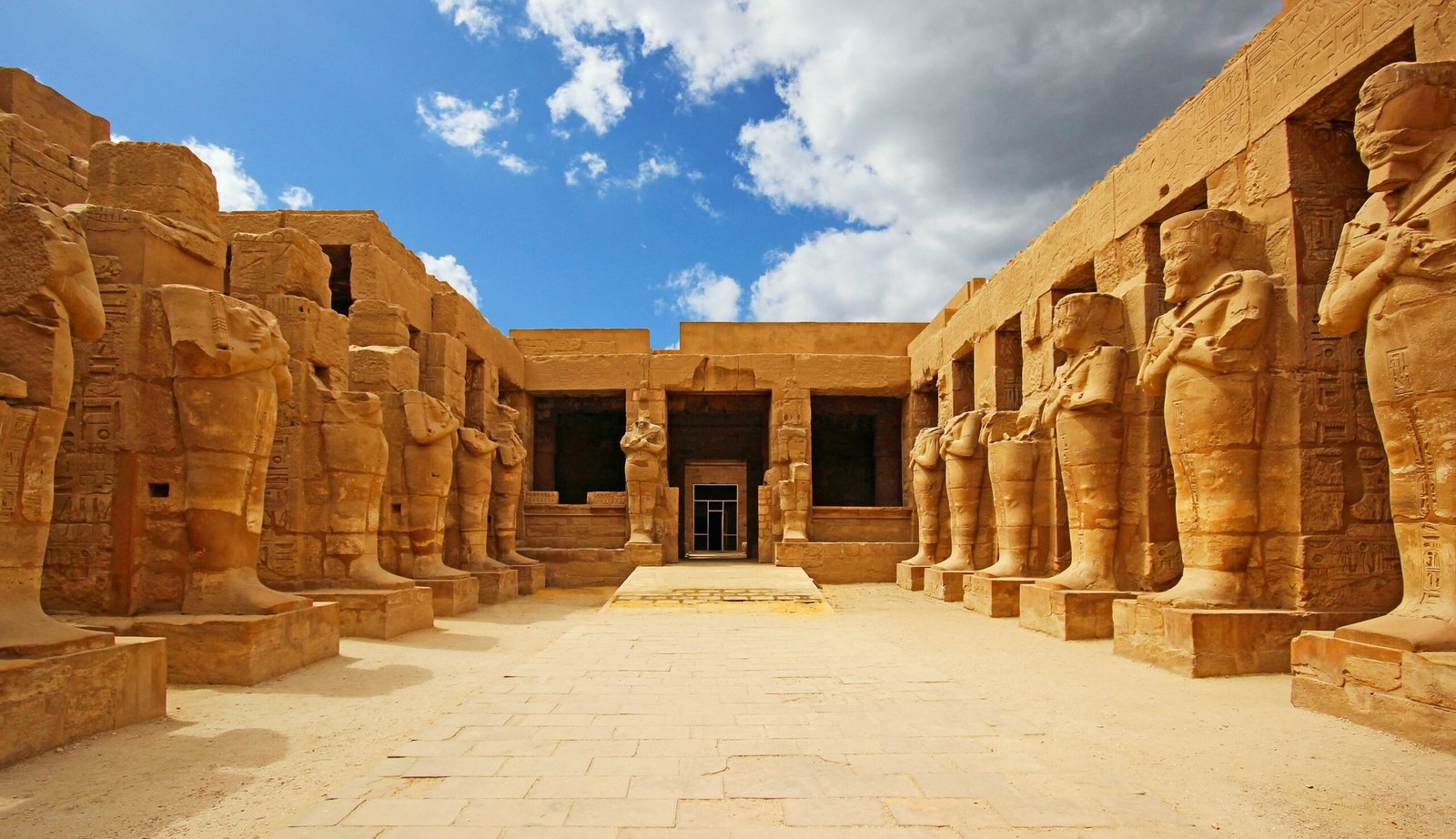During ancient times, the amazing temples in Egypt stood as magnificent testaments to the elegance of civilization and the spiritual devotion of its people. Today, these awe-inspiring structures continue to captivate visitors from around the world with their architectural brilliance and historical significance.
The first Egyptian temples were constructed in the style of reed houses sometime around the middle of the 4th millennium BC. The final Egyptian temple to be built was at Philae, which was abandoned in the sixth century AD.
It should come as no surprise that there are many distinct types of ancient Egyptian temples on this list, as they have developed over a very long period. A trip to Egypt wouldn’t be complete without seeing at least one of these temples.
Follow me carefully as we explore the top 10 amazing temples in Egypt, each a testament to the enduring legacy of this remarkable civilization.
Read Also: The Best Place to Stay in Barcelona in 2024|Best Neighbourhoods
Top Amazing Temples in Egypt
1. The Temple of Karnak

The construction of the Karnak Temple, one of the amazing temples in Egypt, spanned an incredible two millennia, from 2055 BC to 100 AD. Three gods of ancient Egypt, Amun-Re, Mut, and Montu, were honored with a shrine at Karnak. Furthermore, the main temple structure was the biggest religious site ever constructed.
Its Hypostyle Hall is the most striking feature. Karnak’s hypostyle hall is enormous and is made up of pillars with a roof on top. It is a sixteen-row structure with 134 columns. Just this portion occupied 54,000 square feet (16,459 meters). One of the largest ancient remains in the world, Karnak Temple, is best experienced with the help of a guide.
2. The Temple of Abu Simbel
Among the most amazing temples in Egypt is Abu Simbel. Originally constructed on lower terrain along the Nile River, the Abu Simbel Temple is now located on Lake Nassar, close to the Sudanese border. To prevent the ruins from being buried beneath Lake Nassar, a massive project to relocate them to higher ground was started in the 1960s with the construction of the Aswan Dam.
They’re secure and sound where they are right now. Standing sentry over the lake’s edges are four 20-meter monuments that depict Ramesses II. Three of the statues, which date back to roughly 1265 BC, are still in comparatively good condition for an ancient Egyptian temple. To witness these monuments up close and personal, you can take a tour from Luxor or Aswan,
Read Also: 19 Outstanding Things to Do in Malaga, Spain in 2024
3. The Temple of Luxor
Founded in 1400 BC during the New Kingdom, the Luxor Temple is one of the most amazing temples in Egypt, situated on the eastern bank of the Nile in the ancient city of Thebes. Amun, Mut, and Chons were the three Egyptian gods honored in this temple. The focal point of Opet, the most significant celebration of Thebes, was the temple.
Along the avenue of sphinxes that connects the two temples, the sculptures of the three Gods were escorted from the temple of Amun in Karnak to the temple of Luxor during the annual celebration. Luxor is now the most popular vacation destination in Upper Egypt, serving as the beginning or conclusion point for numerous Nile cruises.
4. Habu Medinet
Despite not being the most well-known amazing temples in Egypt, the second-largest prehistoric temple in Egypt is well-known for its sculptures of Ramses III. Medinet Habu’s structure is nonetheless quite remarkable. It is situated on the West Bank of Luxor. On this location, Hatshepsut and Tutmosis III, two pharaohs, erected a modest temple to Amun.
The largest extant monument in Medinet Habu, Ramesses III’s funerary temple, was constructed next to their temple. Then, Ramesses III encircled both buildings with an enormous wall made of mud bricks that housed dwellings, workshops, and storehouses.
5. Edfu Temple

One of the best-preserved ancient Egyptian temples is the Temple of Edfu, which is situated on the west bank of the Nile and is devoted to the falcon god Horus. The building was started in 237 BC and completed in 57 BC by Ptolemy XII Neos Dionysos, the father of the renowned Cleopatra. The fact that this temple still has a roof makes visiting it much more interesting than just exploring the ruins of an old temple.
This majestic complex, adorned with towering pylons and ornately carved reliefs, offers visitors a glimpse into the religious practices and ceremonies of ancient Egypt. From the grand entrance to the inner sanctuaries, the Temple of Edfu is among the amazing temples in Egypt, a testament to the enduring legacy of Egypt’s pharaonic past.
Read Also: Top 20 Traditional Colombian Dishes | Try in Colombia or at Home
6. Kom Ombo Temple
The ancient Temple of Kom Ombo, which is situated on the Nile River, is devoted to two distinct gods. Dedicated to the crocodile god Sobek and the falcon god Horus, One of the earliest gods in ancient Egypt was Horus the Elder. The Crocodile god of the Nile. Ptolemy VI Philometor founded the real temple at the beginning of the second century BC.
The Temple of Kom Ombo is two temples because everything in it is replicated along the main axis. There are two courts, two colonnades, two hypostyle halls, two sanctuaries, and two entrances. Visitors explore these amazing temples in Egypt as they stroll through their hallowed grounds, which provide them with insight into the antiquated customs and beliefs that once flourished along the banks of the Nile.
7. Hatshepsut’s Mortuary Temple
One of the most amazing temples in Egypt was the Hatshepsut funerary temple, which is situated close to the Valley of the Kings on the West Bank of the Nile. Queen Hatshepsut’s burial tomb, which dates back to 1458 BC, is located in the Valley of the Kings, which is also home to the mortuary temples of the ancient Pharaohs.
Egypt was thousands of years ahead of its time. One of its most prosperous pharaohs, Hatshepsut, was a female ruler. She had 21 years in power. It is an amazing sight, and reputedly one of the most spectacularly positioned temples in the world.
The Hatshepsut Mortuary Temple features three tiers that lead out onto the desert and is built into the side of a sizable cliff. This land was once covered in a thick layer of flora, but it is now dry. The land is nonetheless impressive despite being desolate. The way the enormous cliffs frame it makes it appear even more menacing.
8. Temples of Philae
The goddess Isis’s cult was centered on the island of Philae. The first temple on the island was built by native pharaohs during the 30th dynasty. This temple complex is devoted to the goddess Isis, who was regarded as the heavenly mother and protector of ancient Egypt and is nestled on the scenic island of Philae.
The Temple of Philae retains its enchanting allure, with its graceful colonnades, towering pylons, and intricate reliefs paying homage to the goddess of magic and fertility. Built-in 100 AD by the Roman Emperor Trajan, Trajan’s Kiosk most likely functioned as a river entry to the bigger temple dedicated to Isis. Both sites are among the amazing temples in Egypt.
To prevent the temple and other island sites from being destroyed by the rising waters of the Nile as a result of the building of the Aswan High Dam, UNESCO moved them to the island of Agilika in the 1960s. Philae’s island is now submerged under Lake Nasser.
Read Also: The 24 Top Travel Apps in 2024 |That You Must Know
9. Seti I Temple
The tomb of Pharaoh Seti I is one of the amazing temples in Egypt, located near Abydos on the west bank of the Nile. It is known as the Temple of Seti I. Built near the conclusion of Seti’s reign, the ancient temple may have been finished by his son Ramesses the Great following his death in 1279 BC.
The Abydos King List is kept at the temple. This is a chronological list of the seventy-six ancient Egyptian dynastic pharaohs, starting with Menes, the ruler who is credited with starting the First Dynasty and ending with Seti’s father, Ramesses I.
10. Memnon’s Colossi
The Colossi of Memnon are two enormous stone statues that were constructed in 1350 BC and show Pharaoh Amenhotep III sitting. The Colossi’s initial role was to guard the entrance to the mortuary temple of Amenhotep, where the god was worshipped both before and after his death.
Except for the two statues, one of the amazing temples in Egypt has nearly vanished from existence. The features above the waists of both statues are essentially unrecognizable due to their extensive destruction.
Facts about Egyptian Temples
Though the ancient Egyptians believed these temples to be the homes of the gods, the Pharaohs used them for worship. Priests performed temple rites, but religion was not what it is today. The truth was that the King was more powerful than any religion, and priests did what he said.
The Old Kingdom and the New Kingdom were the divisions of Egypt’s kingdoms. The New Kingdom, which ruled over ancient Egypt from 1570 to 1070 BC, was its most wealthy period. Many of the temples were constructed during this time.
For the Pharaohs of the New Kingdom, the Valley of the Kings was constructed. The Old Kingdom, sometimes referred to as the Pyramid Period, lasted from 2575 BC to 2150 BC. The construction of the Giza Pyramids took place during this period.
Read Also: Top 10 Airlines in the US for 2024
FAQs About Amazing Temples of Egypt
1. Can I visit these temples as a tourist?
Yes, all of these temples are open to tourists, and guided tours are available to enhance your experience.
2. Are there entry fees for visiting these temples?
Yes, there are entry fees for most of these temples, which may vary depending on the site and your nationality.
3. What is the best time of year to visit Egypt’s temples?
The best time to visit Egypt’s temples is during the cooler months of October to April, avoiding the scorching heat of the summer months.
4. Are there any special events or festivals held at these temples?
While some temples may host special events or festivals, such as the annual Opet Festival at Karnak, it’s best to check with local authorities or tour operators for updated information.
5. Can I take photographs inside these temples?
Yes, photography is generally allowed inside the temples, but flash photography may be prohibited in certain areas to preserve the ancient artworks and inscriptions.
Read Also: Indianapolis boat sport and travel show | Details
The amazing temples in Egypt serve as enduring testaments to the creativity, design, and spirituality of this extraordinary civilization. They can be found everywhere, every stone at these historic locations reveals a different aspect of Egypt’s eternal legacy, transporting tourists back in time to a time of pharaohs and gods.

